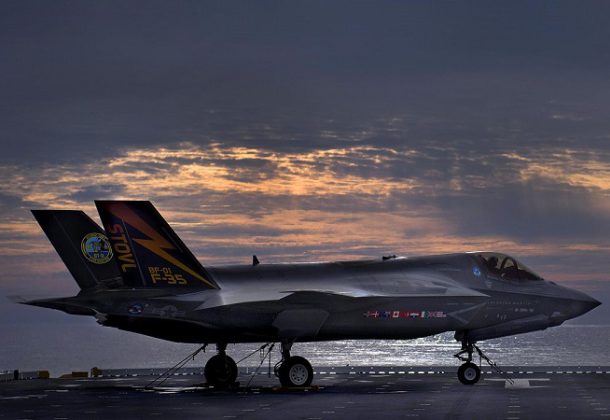Pentagon Taking Aim at F-35 Cost

Morning Coffee is a robust blend of links to news around the Internet concerning the Naval Air Station Patuxent River  economic community. The opinions expressed here do not reflect opinions of the Leader’s owners or staff.
economic community. The opinions expressed here do not reflect opinions of the Leader’s owners or staff.
The Pentagon has taken over an effort to cut the cost of the F-35 Joint Strike Fighter, after rejecting plans proposed by Lockheed Martin and its partners, as it tries to make a program estimated to cost $400 billion more affordable, reports Fox Business.
DefSec James Mattis reminded Defense Department personnel that “it is a violation of our oath to divulge, in any fashion, non-public DoD information, classified or unclassified, to anyone without the required security clearance as well as a specific need to know in the performance of their duties,” reports Military Times. DefSec Mattis issued a memo late last week Thursday to all military and DoD civilian personnel against information leaks. Defense officials noted a series of incidents where leaks hampered operations as the reason for the memo.
The White House has declined to clarify remarks made by President Donald Trump last week hinting at looming military action against US adversaries, Military Times reports, saying only that the commander in chief is keeping all of his options open.
New video synthetic aperture radar, or ViSAR, technology was successfully tested by the Defense Advanced Research Projects Agency, reports Defense Systems. Electro-optical infrared sensors guide aircraft at high speeds and high altitudes, but usually they are thwarted by clouds and dust. However, these new aircraft sensors may soon be able to penetrate even the most obscure conditions.
The Navy is accelerating the use of artificial intelligence analytics for its Digital Warfare Office that is tasked with tracking a wide range of cyberattacks, Defense Systems reports.
A decade ago, Okinawa offered Marines a break from the grueling deployment cycles that are normal for those who were constantly deploying to Iraq and Afghanistan, reports Military Times. Today, those Middle East deployments are rare. Military hot spots like North Korea are demanding frequent deployments in Asia in places such as Okinawa, Hawaii, Japan, and Australia.
The US Army Pacific is testing a program to help junior leaders become experts in certain regions, reports Defense News. The Regional Leader Development Program, a pilot program launched in August, is giving service members a familiarization of the Pacific region.
The Air Force released an RFP for further development of a next-generation launch vehicle, which will give the service access to space through two companies with homegrown rockets and engines, reports Defense News. The program, Evolved Expendable Launch Vehicle, aims to work with industry to fund at least two domestically made launch systems.
Canadian special forces, along with their counterparts from Australia as well as US military took part in live-fire joint exercise in California involving aircraft, drones, and a US Navy cruiser, reports the Ottawa Citizen.
The US State Department approved a potential $15 billion request for Saudi Arabia to purchase the Terminal High Altitude Area Defense missile defense system, Defense News reports. The THAAD deal was part of the $110B weapons sale offering presented by President Trump during a May visit to Saudi Arabia.
The military services are in various stages of implementing extended hours at child development centers where the need has been identified, Military Times reports, with more facilities upping their daily availability from 12 hours to 14.
Wearable technology makes the transition from the wrist to clothes, bags and other items. Among the creations, Yahoo Finance UK reports, are sunglasses created specifically for cyclists, which were designed in conjunction with the USA Cycling Team, leveraging technologies developed for US military JSF pilots.























